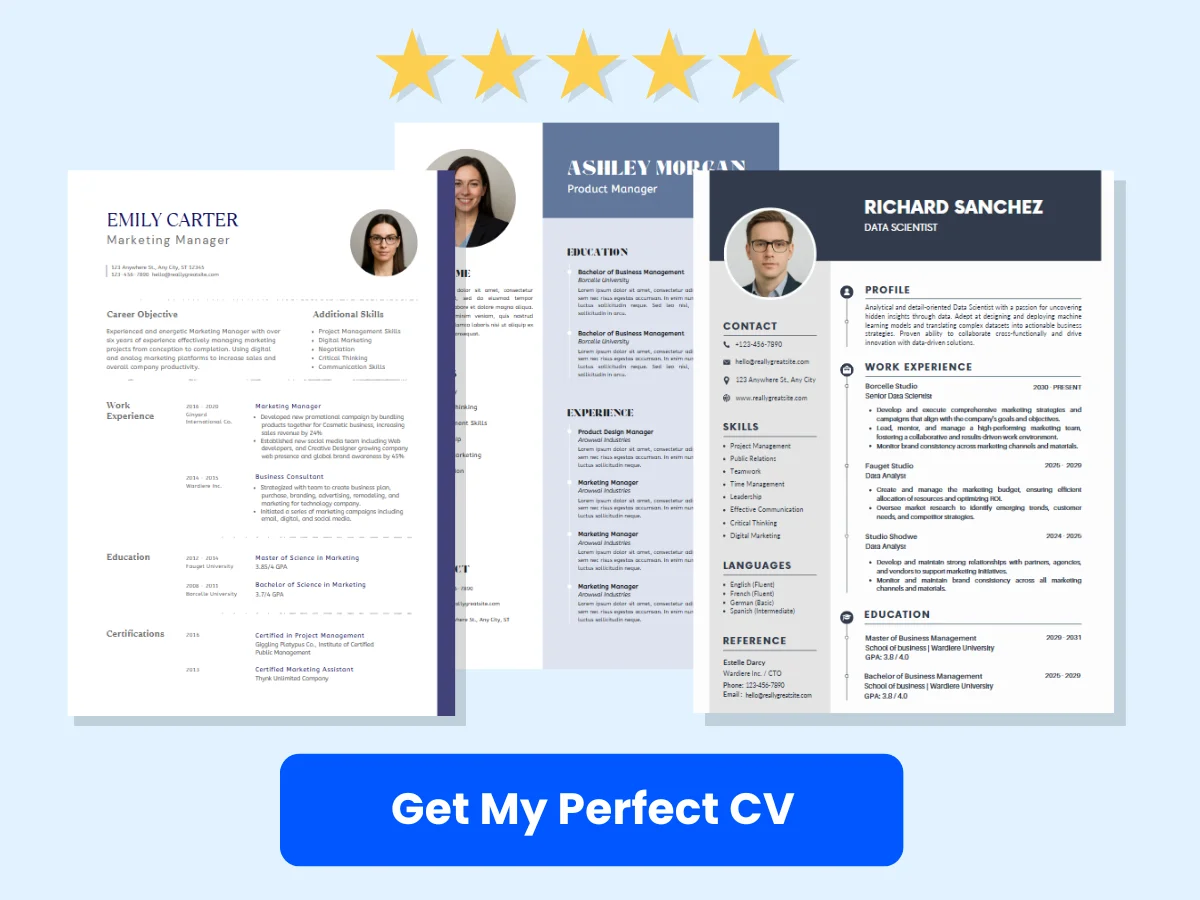In a world that is constantly evolving, the ability to learn efficiently and effectively has never been more crucial. Whether you’re a student, a professional, or simply a lifelong learner, mastering the art of learning can significantly enhance your skill acquisition and retention. This article delves into the fascinating concept of “Learning to Learn,” exploring strategies and techniques that empower you to master new skills faster and smarter.
Understanding how to learn effectively is not just about memorizing facts or completing tasks; it’s about developing a mindset that embraces curiosity, adaptability, and resilience. As we navigate through various learning methodologies, cognitive science insights, and practical tips, you will discover how to optimize your learning process, overcome common obstacles, and harness your unique learning style.
By the end of this article, you will be equipped with actionable strategies that can transform the way you approach learning. From leveraging technology to understanding the psychology behind skill acquisition, you’ll gain valuable tools to accelerate your journey toward mastery. Join us as we unlock the secrets to learning smarter, not harder, and set the stage for lifelong success.
Exploring the Science of Learning
Cognitive Psychology and Learning
Cognitive psychology is a branch of psychology that focuses on the study of mental processes, including how people think, learn, remember, and perceive. Understanding cognitive psychology is essential for mastering the art of learning, as it provides insights into how the brain processes and retains information. This section delves into the mechanisms of learning from a cognitive perspective, highlighting key principles that can enhance our ability to acquire new skills.
How the Brain Processes and Retains Information
The brain is a complex organ that processes information through a series of interconnected networks. When we learn something new, our brain undergoes a series of stages: encoding, storage, and retrieval. Each of these stages plays a crucial role in how we acquire and retain knowledge.


- Encoding: This is the first step in the learning process, where information is transformed into a format that can be stored in the brain. Encoding can be enhanced through various techniques, such as visualization, association, and repetition. For example, when learning a new language, associating words with images can help encode the information more effectively.
- Storage: Once information is encoded, it is stored in the brain for future use. The brain uses different types of memory systems, including short-term memory and long-term memory. Short-term memory holds information temporarily, while long-term memory is where information is stored more permanently. Techniques like spaced repetition can help transfer information from short-term to long-term memory.
- Retrieval: This is the process of accessing stored information when needed. Retrieval can be improved through practice and testing, which reinforce the connections in the brain. For instance, taking practice tests can enhance recall and solidify learning.
Key Cognitive Principles that Impact Learning
Several cognitive principles can significantly impact how effectively we learn. Understanding these principles can help learners adopt strategies that align with how the brain naturally processes information.
- Active Learning: Engaging actively with the material, rather than passively consuming information, leads to better retention. Techniques such as summarizing, teaching others, or applying concepts in real-world scenarios can enhance active learning.
- Metacognition: This refers to the awareness and understanding of one’s own thought processes. By reflecting on what we know and how we learn, we can develop strategies to improve our learning. For example, keeping a learning journal can help track progress and identify areas for improvement.
- Chunking: This technique involves breaking down information into smaller, manageable units or “chunks.” For instance, when memorizing a long string of numbers, grouping them into sets (like a phone number) can make them easier to remember.
- Feedback: Receiving feedback is crucial for learning. It helps identify mistakes and reinforces correct understanding. Constructive feedback can guide learners in adjusting their strategies and improving their skills.
Neuroplasticity: The Brain’s Ability to Adapt
Neuroplasticity refers to the brain’s remarkable ability to reorganize itself by forming new neural connections throughout life. This adaptability is fundamental to learning and skill acquisition, as it allows the brain to adjust to new experiences, learn from them, and even recover from injuries. Understanding neuroplasticity can empower learners to harness this ability for more effective skill development.
Exploring Neuroplasticity and Its Role in Learning
Neuroplasticity occurs at various levels, from cellular changes (involving individual neurons) to large-scale cortical remapping. When we learn something new, our brain creates new synapses (connections between neurons) and strengthens existing ones. This process is often referred to as “Hebbian learning,” summarized by the phrase “cells that fire together, wire together.”
Research has shown that neuroplasticity is not limited to childhood; adults can also experience significant changes in their brain structure and function. For example, studies have demonstrated that learning a musical instrument can lead to increased gray matter in areas of the brain associated with auditory processing and motor control.
Practical Ways to Harness Neuroplasticity for Skill Acquisition
To leverage neuroplasticity for faster and smarter skill acquisition, consider the following practical strategies:
- Deliberate Practice: Engaging in focused, goal-oriented practice is essential for skill development. Deliberate practice involves breaking down skills into smaller components, practicing them repeatedly, and seeking feedback. For instance, a chess player might focus on mastering specific openings before playing full games.
- Variety in Learning: Introducing variability in practice can enhance neuroplasticity. For example, a language learner might practice speaking, listening, reading, and writing in different contexts rather than sticking to one method. This variety challenges the brain and promotes deeper learning.
- Mindfulness and Meditation: Mindfulness practices have been shown to enhance neuroplasticity by promoting focus and reducing stress. Regular meditation can improve attention and cognitive flexibility, making it easier to learn new skills.
- Physical Exercise: Engaging in regular physical activity has been linked to increased neurogenesis (the formation of new neurons) and improved cognitive function. Activities like aerobic exercise can boost blood flow to the brain, enhancing its ability to adapt and learn.
- Sleep and Rest: Sleep plays a critical role in consolidating memories and facilitating learning. During sleep, the brain processes and organizes information acquired during the day. Prioritizing quality sleep can significantly enhance learning outcomes.
By understanding the science of learning through cognitive psychology and neuroplasticity, individuals can adopt more effective strategies for mastering new skills. These insights not only empower learners to optimize their learning processes but also highlight the brain’s incredible capacity for growth and adaptation throughout life.


Strategies for Effective Learning
Active Learning Techniques
Active learning is a pedagogical approach that actively engages students in the learning process, encouraging them to participate in their own education rather than passively receiving information. This method has been shown to enhance understanding, retention, and application of knowledge. The power of active engagement in learning lies in its ability to transform the educational experience from a one-way transmission of information into a dynamic interaction between learners and the material.
The Power of Active Engagement in Learning
When learners are actively involved in their education, they are more likely to retain information and develop critical thinking skills. Active learning techniques promote deeper cognitive processing, which leads to better understanding and long-term retention. Research has shown that students who engage in active learning outperform their peers in traditional lecture-based settings. This is because active learning encourages students to analyze, synthesize, and evaluate information, rather than simply memorizing facts.
Examples of Active Learning Methods
- Group Discussions: Engaging in discussions allows learners to articulate their thoughts, challenge each other’s ideas, and collaboratively construct knowledge.
- Problem-Based Learning (PBL): In PBL, students work on real-world problems, fostering critical thinking and application of knowledge in practical scenarios.
- Case Studies: Analyzing case studies helps learners apply theoretical concepts to real-life situations, enhancing their understanding and problem-solving skills.
- Peer Teaching: Teaching peers reinforces the teacher’s understanding and allows for the exchange of diverse perspectives.
- Interactive Simulations: Simulations provide a hands-on experience that can deepen understanding of complex concepts, especially in fields like science and engineering.
Incorporating these active learning techniques into your study routine can significantly enhance your ability to master new skills and knowledge more effectively.
Spaced Repetition and Memory Retention
Spaced repetition is a learning technique that involves reviewing information at increasing intervals over time. This method is grounded in the science of memory retention and is particularly effective for long-term learning. By spacing out study sessions, learners can combat the forgetting curve, which illustrates how information is lost over time without reinforcement.
The Science Behind Spaced Repetition
The concept of spaced repetition is based on the psychological principle that information is more easily recalled if it is studied multiple times over a longer period, rather than crammed in a short time frame. This technique leverages the brain’s natural learning processes, allowing for better encoding and retrieval of information. Studies have shown that spaced repetition can improve retention rates by up to 50% compared to traditional study methods.


Tools and Techniques for Implementing Spaced Repetition
To effectively implement spaced repetition, various tools and techniques can be utilized:
- Flashcards: Digital flashcard apps like Anki and Quizlet allow users to create custom flashcards and utilize spaced repetition algorithms to optimize review sessions.
- Study Schedules: Create a study schedule that incorporates spaced intervals for reviewing material. For example, review new information after one day, then after three days, a week, and so on.
- Chunking Information: Break down complex information into smaller, manageable chunks. This makes it easier to review and retain over spaced intervals.
- Self-Testing: Regularly test yourself on the material you’ve learned. This not only reinforces memory but also helps identify areas that need further review.
By integrating spaced repetition into your learning strategy, you can enhance your memory retention and accelerate your mastery of new skills.
The Feynman Technique
The Feynman Technique is a simple yet powerful method for learning and understanding complex concepts. Named after the renowned physicist Richard Feynman, this technique emphasizes the importance of teaching others as a way to deepen one’s own understanding. The core idea is that if you can’t explain a concept in simple terms, you don’t truly understand it.
How to Use the Feynman Technique to Deepen Understanding
The Feynman Technique consists of four key steps that guide learners through the process of mastering a concept:
- Choose a Concept: Start by selecting a concept or topic you want to learn. This could be anything from a scientific principle to a historical event.
- Teach It to a Child: Write down everything you know about the topic as if you were teaching it to a child. Use simple language and avoid jargon. This forces you to clarify your understanding and identify gaps in your knowledge.
- Identify Gaps and Review: Go back to your study materials and review the areas where your explanation was lacking. Fill in the gaps in your understanding by researching and studying those specific aspects.
- Simplify and Use Analogies: Once you have a comprehensive understanding, simplify your explanation further and use analogies to make the concept relatable. This will help reinforce your understanding and make it easier to recall in the future.
Step-by-Step Guide to Applying the Technique
To effectively apply the Feynman Technique, follow these detailed steps:
- Gather Your Materials: Collect all relevant notes, textbooks, and resources related to the concept you wish to learn.
- Write It Down: On a blank sheet of paper, write the name of the concept at the top. Below it, start writing everything you know about the topic in your own words.
- Review and Research: After you’ve written your explanation, review it critically. Identify any areas where you struggled to explain or where your understanding was weak. Go back to your materials and research these areas until you feel confident.
- Teach It Out Loud: Find a friend, family member, or even an imaginary audience, and teach the concept out loud. This verbalization helps reinforce your understanding and highlights any remaining gaps.
- Refine Your Explanation: Based on your teaching experience, refine your explanation. Simplify complex terms and incorporate analogies that make the concept easier to grasp.
By consistently applying the Feynman Technique, you can deepen your understanding of complex subjects and enhance your ability to learn new skills effectively.


Enhancing Focus and Concentration
Eliminating Distractions
In our fast-paced, technology-driven world, distractions are everywhere. From the constant ping of notifications on our smartphones to the allure of social media, maintaining focus can be a significant challenge. However, understanding and eliminating these distractions is crucial for effective learning. Here, we will explore common distractions and strategies to avoid them, as well as how to create an optimal learning environment.
Identifying Common Distractions and How to Avoid Them
Distractions can be broadly categorized into internal and external factors. Internal distractions stem from our thoughts and feelings, while external distractions come from our environment. Here are some common distractions and strategies to mitigate them:
- Digital Distractions: Notifications from social media, emails, and messaging apps can easily divert our attention. To combat this, consider using apps that block notifications during study sessions, or simply put your phone in another room.
- Environmental Noise: Background noise can disrupt concentration. If you’re studying in a noisy environment, consider using noise-canceling headphones or playing soft instrumental music to drown out distractions.
- Multitasking: Attempting to juggle multiple tasks can lead to decreased productivity. Focus on one task at a time, using techniques like the Pomodoro Technique, which involves working for 25 minutes followed by a 5-minute break.
- Physical Clutter: A disorganized workspace can be distracting. Take time to declutter your study area, keeping only essential materials within reach to minimize visual distractions.
Creating an Optimal Learning Environment
Your learning environment plays a pivotal role in your ability to focus and absorb information. Here are some tips for creating an optimal space:
- Choose the Right Location: Find a quiet place where you feel comfortable and can concentrate. This could be a library, a dedicated study room, or even a quiet café.
- Control Lighting: Ensure your study area is well-lit. Natural light is ideal, but if that’s not possible, use warm, bright artificial lighting to reduce eye strain.
- Ergonomic Setup: Invest in a comfortable chair and desk that promote good posture. Your physical comfort can significantly impact your ability to focus.
- Personalize Your Space: Add elements that inspire you, such as motivational quotes, plants, or artwork. A personalized space can enhance your mood and motivation.
Mindfulness and Meditation
Mindfulness and meditation are powerful tools for enhancing focus and concentration. By training your mind to be present, you can improve your ability to learn and retain information. Let’s delve into the benefits of mindfulness for learning and explore some simple exercises to incorporate into your routine.
The Benefits of Mindfulness for Learning
Mindfulness involves paying attention to the present moment without judgment. This practice can lead to numerous benefits for learners:
- Improved Focus: Mindfulness helps reduce mind-wandering, allowing you to concentrate better on the task at hand. Studies have shown that mindfulness training can enhance attention span and cognitive flexibility.
- Reduced Stress: Learning can often be stressful, especially when preparing for exams or mastering new skills. Mindfulness practices can lower stress levels, leading to a calmer mind and improved learning outcomes.
- Enhanced Memory: Mindfulness can improve working memory capacity, which is essential for learning new information. By being present and engaged, you are more likely to retain what you learn.
- Greater Emotional Regulation: Mindfulness fosters emotional awareness, helping you manage anxiety and frustration that may arise during the learning process. This emotional stability can lead to a more positive learning experience.
Simple Mindfulness Exercises to Improve Focus
Incorporating mindfulness into your daily routine doesn’t have to be complicated. Here are some simple exercises you can practice to enhance your focus:


- Breath Awareness: Take a few minutes each day to focus solely on your breath. Sit comfortably, close your eyes, and inhale deeply through your nose, then exhale slowly through your mouth. If your mind wanders, gently bring your focus back to your breath.
- Body Scan: This exercise involves mentally scanning your body from head to toe. As you focus on each part, notice any tension or discomfort. This practice can help you become more aware of your physical state and promote relaxation.
- Mindful Observation: Choose an object in your environment and observe it closely for a few minutes. Notice its color, texture, and shape. This exercise trains your mind to focus on a single point of interest, enhancing your concentration skills.
- Walking Meditation: Take a slow, mindful walk, paying attention to each step. Feel the ground beneath your feet and notice the sensations in your body as you move. This practice combines physical activity with mindfulness, promoting both focus and relaxation.
By integrating these mindfulness exercises into your daily routine, you can cultivate a greater sense of awareness and focus, ultimately enhancing your learning experience.
Enhancing focus and concentration is a multifaceted process that involves eliminating distractions and incorporating mindfulness practices. By creating an optimal learning environment and engaging in mindfulness exercises, you can master skills faster and smarter, paving the way for lifelong learning and personal growth.
Leveraging Technology for Learning
Educational Apps and Platforms
In the digital age, technology has transformed the way we learn. Educational apps and platforms have emerged as powerful tools that can enhance our learning experiences, making them more interactive, engaging, and personalized. With a plethora of options available, it’s essential to understand the landscape of educational technology to make informed choices that align with your learning goals.
Overview of Top Educational Apps and Platforms
There are numerous educational apps and platforms designed to cater to various learning styles and subjects. Here are some of the most popular and effective ones:


- Khan Academy: This free platform offers a vast library of instructional videos and practice exercises across subjects like math, science, and humanities. Its personalized learning dashboard allows users to track their progress and focus on areas that need improvement.
- Duolingo: A gamified language-learning app that makes acquiring a new language fun and engaging. Users can practice vocabulary, grammar, and pronunciation through interactive exercises and challenges.
- Coursera: Partnering with top universities and organizations, Coursera provides access to a wide range of online courses, specializations, and degrees. Users can learn at their own pace and earn certificates that can enhance their resumes.
- Quizlet: This app allows users to create and study flashcards, quizzes, and games. It’s particularly useful for memorizing information and reinforcing knowledge through repetition.
- Notion: A versatile productivity tool that can be used for note-taking, project management, and collaboration. Notion’s customizable templates make it an excellent choice for organizing study materials and tracking learning progress.
How to Choose the Right Tools for Your Learning Needs
With so many educational apps and platforms available, selecting the right tools can be overwhelming. Here are some key considerations to help you make the best choice:
- Identify Your Learning Goals: Before diving into the world of educational technology, clarify what you want to achieve. Are you looking to learn a new skill, improve your grades, or explore a new subject? Your goals will guide your selection process.
- Assess Your Learning Style: Everyone has a unique learning style. Some people learn best through visual aids, while others prefer auditory or kinesthetic methods. Choose apps and platforms that align with your preferred learning style to maximize retention and understanding.
- Read Reviews and Testimonials: Research the apps and platforms you’re considering. Look for user reviews and testimonials to gauge their effectiveness and usability. Websites like Common Sense Education and EdSurge provide valuable insights into various educational tools.
- Consider Accessibility and Cost: Many educational apps offer free versions, but some may require subscriptions or one-time payments. Evaluate your budget and consider whether the features offered justify the cost. Additionally, ensure that the platform is accessible on your preferred devices.
- Test Before Committing: Most educational apps allow users to try out their features before making a commitment. Take advantage of free trials or basic versions to see if the tool meets your needs.
Online Courses and MOOCs
Massive Open Online Courses (MOOCs) have revolutionized the way we access education. These online courses provide opportunities for learners worldwide to engage with high-quality content from renowned institutions. Understanding the advantages of online learning and how to navigate this landscape can significantly enhance your educational journey.
The Advantages of Online Learning
Online learning offers several benefits that traditional classroom settings may not provide:
- Flexibility: One of the most significant advantages of online courses is the flexibility they offer. Learners can study at their own pace, fitting their education around work, family, and other commitments. This adaptability can lead to a more balanced and less stressful learning experience.
- Access to Diverse Resources: Online courses often include a variety of multimedia resources, such as videos, podcasts, and interactive quizzes. This diversity caters to different learning styles and helps reinforce concepts through multiple formats.
- Global Networking Opportunities: Enrolling in online courses allows you to connect with learners from around the world. This global perspective can enrich discussions and provide insights into different cultures and viewpoints.
- Cost-Effectiveness: Many online courses are more affordable than traditional education. Additionally, learners can save on commuting and accommodation costs, making education more accessible to a broader audience.
- Self-Paced Learning: Online courses often allow learners to progress at their own speed. This self-paced approach can lead to deeper understanding, as students can spend more time on challenging topics without the pressure of a fixed schedule.
Tips for Selecting and Succeeding in Online Courses
While online learning offers numerous advantages, it also requires a proactive approach to ensure success. Here are some tips for selecting the right courses and thriving in an online learning environment:
- Research Course Content: Before enrolling, review the course syllabus and content. Ensure that the topics covered align with your learning goals and interests. Look for courses that offer practical applications and real-world examples.
- Check Instructor Credentials: Investigate the qualifications and experience of the course instructors. Learning from experts in the field can enhance the quality of your education and provide valuable insights.
- Engage with the Community: Many online courses include discussion forums or social media groups. Actively participating in these communities can enhance your learning experience, provide support, and foster connections with fellow learners.
- Set a Schedule: To stay on track, create a study schedule that outlines when you will engage with course materials. Treat your online learning as you would a traditional class, dedicating specific times for study and assignments.
- Utilize Available Resources: Take advantage of any additional resources offered by the course, such as supplementary readings, webinars, or office hours with instructors. These resources can deepen your understanding and provide further context to the material.
- Stay Motivated: Online learning requires self-discipline and motivation. Set personal milestones and reward yourself for achieving them. Keeping your end goals in mind can help maintain your focus and enthusiasm.
By leveraging technology through educational apps, platforms, and online courses, learners can enhance their skills and knowledge more efficiently than ever before. The key is to choose the right tools and adopt effective strategies that align with your personal learning style and objectives.


Developing a Growth Mindset
Exploring Fixed vs. Growth Mindset
The concept of mindset plays a crucial role in how we approach learning and skill acquisition. Psychologist Carol Dweck introduced the terms “fixed mindset” and “growth mindset” to describe two contrasting beliefs about our abilities and intelligence. Understanding these mindsets can significantly impact our capacity to learn and develop new skills.
The Impact of Mindset on Learning and Skill Acquisition
A fixed mindset is characterized by the belief that our abilities, intelligence, and talents are static traits that cannot be changed. Individuals with a fixed mindset often avoid challenges, give up easily, and feel threatened by the success of others. This mindset can lead to a fear of failure, as mistakes are seen as a reflection of one’s inherent limitations.
In contrast, a growth mindset embraces the idea that abilities and intelligence can be developed through dedication, hard work, and perseverance. Those with a growth mindset view challenges as opportunities for growth, are more resilient in the face of setbacks, and are inspired by the success of others. This mindset fosters a love for learning and a willingness to take risks, which are essential for mastering new skills.
Research has shown that individuals with a growth mindset are more likely to achieve higher levels of success in various domains, including academics, sports, and the workplace. For example, students who believe they can improve their intelligence through effort tend to perform better in school than those who think their intelligence is fixed. This highlights the profound impact that mindset can have on our learning journey.
Strategies to Cultivate a Growth Mindset
Shifting from a fixed mindset to a growth mindset is not an overnight process; it requires intentional effort and practice. Here are several strategies to help cultivate a growth mindset:
- Embrace Challenges: Instead of avoiding difficult tasks, seek them out. Embracing challenges can help you develop new skills and build confidence. For instance, if you struggle with public speaking, consider joining a local Toastmasters club to practice and improve.
- Learn from Criticism: Instead of viewing feedback as a personal attack, see it as a valuable opportunity for growth. Constructive criticism can provide insights into areas for improvement. For example, if a mentor provides feedback on your project, use it to refine your approach and enhance your skills.
- Celebrate Effort, Not Just Results: Recognize and reward the effort you put into learning, regardless of the outcome. This reinforces the idea that hard work leads to improvement. For instance, if you’re learning a new language, celebrate the hours spent practicing, even if you make mistakes along the way.
- Surround Yourself with Growth-Minded Individuals: Engage with people who have a growth mindset. Their attitudes and behaviors can inspire you to adopt similar beliefs. Join study groups, workshops, or online communities where members encourage each other’s growth.
- Practice Self-Reflection: Regularly reflect on your learning experiences. Ask yourself what you learned from a particular challenge and how you can apply those lessons in the future. Keeping a journal can be an effective way to track your progress and insights.
Overcoming Fear of Failure
Fear of failure is a common barrier that prevents many individuals from pursuing new skills or challenges. This fear can stem from societal pressures, past experiences, or a fixed mindset. However, learning to view failure as a stepping stone rather than a setback is essential for personal and professional growth.
How to View Failure as a Learning Opportunity
Reframing failure as a learning opportunity is a powerful mindset shift. Here are some ways to change your perspective on failure:
- Analyze the Experience: When you encounter failure, take the time to analyze what went wrong. Identify specific factors that contributed to the outcome and consider what you could do differently next time. This analytical approach transforms failure into a valuable learning experience.
- Share Your Failures: Discussing your failures with others can help normalize the experience and reduce the stigma associated with it. Sharing stories of failure can foster a supportive environment where everyone feels encouraged to take risks and learn from their mistakes.
- Set Realistic Expectations: Understand that mastery takes time and that setbacks are a natural part of the learning process. Setting realistic goals can help mitigate the fear of failure. For example, if you’re learning to play an instrument, focus on mastering one song at a time rather than expecting to perform a complex piece immediately.
- Visualize Success: Use visualization techniques to imagine yourself succeeding in your endeavors. This can help build confidence and reduce anxiety about potential failure. Spend a few minutes each day picturing yourself achieving your goals, whether it’s acing a presentation or completing a challenging project.
Techniques to Build Resilience and Persistence
Resilience and persistence are key traits that enable individuals to overcome obstacles and continue pursuing their goals despite setbacks. Here are some techniques to help build these qualities:
- Develop a Support Network: Surround yourself with supportive friends, family, and mentors who encourage you to keep going, even when the going gets tough. Having a reliable support system can provide motivation and accountability.
- Practice Mindfulness: Mindfulness techniques, such as meditation and deep breathing, can help you manage stress and maintain focus during challenging times. By staying present and grounded, you can better navigate setbacks without becoming overwhelmed.
- Set Incremental Goals: Break larger goals into smaller, manageable tasks. This approach allows you to celebrate small victories along the way, which can boost your motivation and resilience. For example, if you’re training for a marathon, focus on gradually increasing your running distance each week.
- Learn to Adapt: Flexibility is essential for resilience. Be open to adjusting your plans and strategies as needed. If a particular approach isn’t working, don’t hesitate to try something new. This adaptability can help you navigate challenges more effectively.
- Reflect on Past Successes: Remind yourself of previous challenges you’ve overcome. Reflecting on past successes can boost your confidence and remind you that you have the ability to persevere through difficult situations.
By developing a growth mindset and overcoming the fear of failure, you can enhance your ability to learn and master new skills more effectively. Embracing challenges, viewing failures as opportunities, and cultivating resilience will empower you to navigate the complexities of learning with confidence and determination.
Practical Tips for Mastering New Skills
Setting SMART Goals
Goal-setting is a fundamental aspect of the learning process. It provides direction, motivation, and a clear framework for measuring progress. Without well-defined goals, learners may find themselves wandering aimlessly, unsure of what they want to achieve or how to get there. This is where the SMART criteria come into play.
The Importance of Goal-Setting in Learning
Setting goals is crucial for several reasons:
- Clarity: Goals help clarify what you want to achieve, making it easier to focus your efforts.
- Motivation: Having specific targets can boost your motivation, as you have something tangible to strive for.
- Accountability: Goals create a sense of accountability, encouraging you to take responsibility for your learning journey.
- Measurement: Well-defined goals allow you to measure your progress, helping you identify areas for improvement.
How to Create and Achieve SMART Goals
SMART is an acronym that stands for Specific, Measurable, Achievable, Relevant, and Time-bound. Here’s how to apply each component:
- Specific: Your goal should be clear and specific. Instead of saying, “I want to learn guitar,” say, “I want to learn to play ‘Wonderwall’ by Oasis.”
- Measurable: You should be able to track your progress. For example, “I will practice for 30 minutes every day” allows you to measure your commitment.
- Achievable: Ensure that your goal is realistic. If you’re a complete beginner, aiming to play a complex piece in a week may not be feasible.
- Relevant: Your goal should align with your broader objectives. If your aim is to perform at a local venue, learning popular songs is relevant.
- Time-bound: Set a deadline for your goal. For instance, “I will be able to play ‘Wonderwall’ by the end of the month” gives you a clear timeframe.
By following the SMART framework, you can create a structured approach to your learning that enhances your chances of success. Regularly review and adjust your goals as needed to stay aligned with your evolving interests and capabilities.
Deliberate Practice
Deliberate practice is a focused and purposeful approach to skill development. Unlike regular practice, which may involve mindlessly repeating tasks, deliberate practice requires you to engage in activities that challenge your current abilities and push you beyond your comfort zone.
The Concept of Deliberate Practice and Its Significance
Deliberate practice is characterized by several key elements:
- Focus on Improvement: The primary goal of deliberate practice is to improve performance. This means identifying specific areas where you need to grow and targeting those in your practice sessions.
- Feedback: Receiving feedback is essential for deliberate practice. It helps you understand what you’re doing well and where you need to make adjustments.
- Repetition: While repetition is a component of all practice, deliberate practice emphasizes the importance of repeating tasks with a focus on refining technique and addressing weaknesses.
- Challenge: Deliberate practice should be challenging. It should push you to the edge of your current abilities, requiring you to stretch and grow.
How to Structure Practice Sessions for Maximum Improvement
To make the most of your practice sessions, consider the following strategies:
- Set Clear Objectives: Before each session, define what you want to achieve. This could be mastering a specific technique, improving speed, or increasing accuracy.
- Break It Down: Divide your practice into smaller, manageable segments. For example, if you’re learning a new piece of music, focus on mastering a few measures at a time.
- Use a Variety of Techniques: Incorporate different methods into your practice. This could include playing along with recordings, using a metronome, or practicing with a partner.
- Take Breaks: Avoid burnout by taking regular breaks. Short breaks can help maintain focus and prevent fatigue, allowing for more effective practice.
- Reflect: After each session, take a moment to reflect on what you learned. Consider what went well and what could be improved for next time.
By structuring your practice sessions with these principles in mind, you can maximize your learning and accelerate your skill development.
Feedback and Self-Assessment
Feedback and self-assessment are critical components of the learning process. They provide insights into your performance and help you identify areas for improvement.
The Role of Feedback in the Learning Process
Feedback serves several important functions:
- Guidance: Feedback provides guidance on what you’re doing well and what needs improvement, helping you navigate your learning journey.
- Motivation: Constructive feedback can motivate you to continue working hard and striving for excellence.
- Accountability: Receiving feedback from others can create a sense of accountability, encouraging you to stay committed to your goals.
Feedback can come from various sources, including teachers, peers, or even self-assessment. The key is to seek out constructive criticism that can help you grow.
Methods for Effective Self-Assessment and Reflection
Self-assessment is a powerful tool for personal growth. Here are some effective methods to incorporate self-assessment into your learning process:
- Journaling: Keep a learning journal where you document your progress, challenges, and reflections after each practice session. This can help you track your growth over time.
- Video Analysis: Record yourself during practice and review the footage. This allows you to see your performance from an objective perspective and identify areas for improvement.
- Set Milestones: Establish milestones along your learning journey. Regularly assess your progress towards these milestones to stay on track and make necessary adjustments.
- Peer Review: Engage with peers who are also learning the same skill. Provide and receive feedback from one another to gain different perspectives on your performance.
By actively engaging in self-assessment and seeking feedback, you can create a continuous loop of improvement that enhances your learning experience and accelerates your mastery of new skills.
Key Takeaways
- Master the Art of Learning: Understanding how to learn effectively is essential in a rapidly changing world, enabling you to adapt and thrive.
- Utilize Cognitive Principles: Familiarize yourself with cognitive psychology to enhance information retention and processing.
- Embrace Neuroplasticity: Leverage the brain’s ability to adapt by engaging in activities that promote skill acquisition and learning.
- Engage Actively: Implement active learning techniques, such as discussions and hands-on practice, to deepen understanding.
- Practice Spaced Repetition: Use spaced repetition to improve memory retention, employing tools like flashcards and spaced learning apps.
- Apply the Feynman Technique: Teach what you learn to reinforce knowledge and identify gaps in understanding.
- Minimize Distractions: Create a focused learning environment by eliminating common distractions and practicing mindfulness.
- Leverage Technology: Explore educational apps and online courses to enhance your learning experience and access diverse resources.
- Cultivate a Growth Mindset: Embrace challenges and view failures as opportunities for growth to foster resilience in your learning journey.
- Set SMART Goals: Define specific, measurable, achievable, relevant, and time-bound goals to guide your learning process.
- Engage in Deliberate Practice: Structure your practice sessions with intention to maximize improvement and skill mastery.
- Seek Feedback: Regularly assess your progress and seek constructive feedback to refine your learning strategies.
Conclusion
By mastering the principles of learning, you can significantly enhance your ability to acquire new skills efficiently and effectively. Implementing these strategies will not only improve your learning outcomes but also empower you to adapt to new challenges with confidence. Start applying these insights today to embark on a transformative learning journey.








